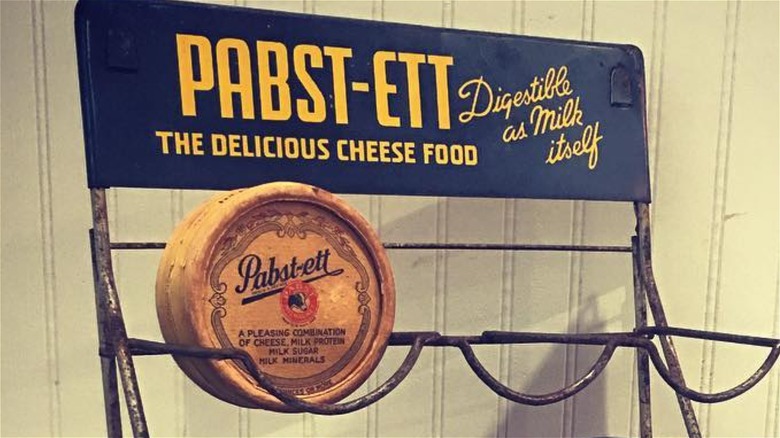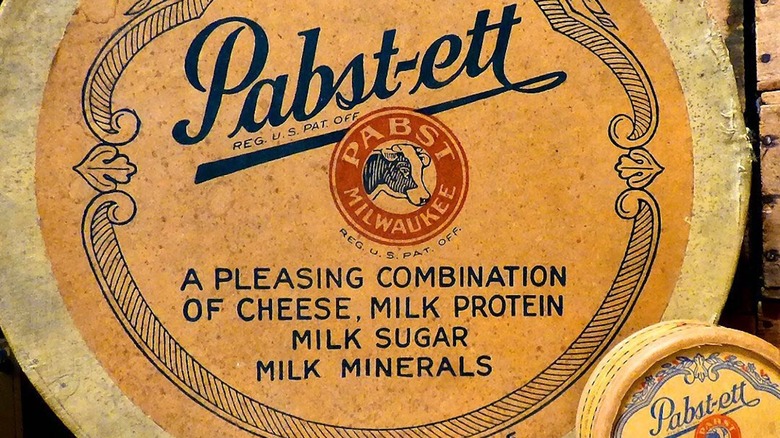The PBR Cheese You Probably Forgot Existed
Prohibition was a notorious 13-year period during which the sale and production of most types of alcohol (with the exception of whiskey if a doctor prescribed it, per NPR) were forbidden in the United States. In the course of the dry spell between the 18th and 21st Amendments, which were ratified in 1919 and 1933 respectively, booze was banned outside American homes, according to History. Businesses were greatly affected, as thousands of people lost their jobs, as Ken Burns explained in the PBS miniseries "Prohibition."
While many breweries, distilleries, wineries, and bars from coast to coast were forced to close their doors as a result of the legislation, some companies were quick on their feet to get a bit creative in order to survive, per History. The Milwaukee-based Pabst Brewing Company, which has been best known for its iconic Pabst Blue Ribbon lager since 1844, was one such resourceful brand. Throughout Prohibition, the Brew City establishment swiftly shifted gears to manufacture another legendary Wisconsin product.
Pabst-ett cheese kept the famous brewery open during Prohibition
Beer and cheese, to some, are a match made in heaven — a pair of culinary staples if you will. So, Pabst thought of a feasible alternative to its best-selling beverage to remain afloat. The Wisconsin dairy industry, including milk, butter, and cheese, has been one of the largest revenue builders for the state since its founding, per Dairy Farmers of Wisconsin, which is why it makes sense that Pabst had the stock to change its model to churn out cheese when beer was outlawed. According to Atlas Obscura, the company began marketing a new "delicious cheese food" known as Pabst-ett in the Prohibition Era.
But still, why cheese instead of soft drinks or a nonalcoholic beer, like competitors Anheuser-Busch and Miller (per History)? The official Pabst Mansion website shares that, at the time, the Pabst family owned a number of dairy farms around Milwaukee, from which they had a surplus milk supply.
Advertisements for Pabst-ett claimed it was "not cheese, but more than cheese" and "more nourishing than milk." Pabst-ett was available in cheddar, pimento, and Swiss varieties. The company even released a cookbook in 1931 called "Recipes the Modern Pabst-ett Way," filled with dishes that called for the savory, spreadable "cheese food." Pabst eventually sold its recipe to the Kraft Cheese Company, which already owned another popular brand of processed cheese, Velveeta. Cheers to innovative, cheesy solutions in a beerless age!

